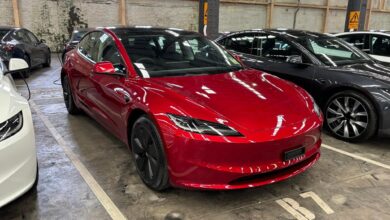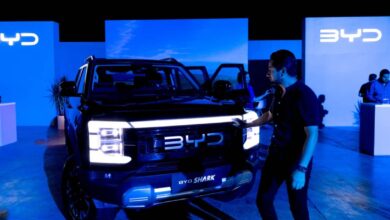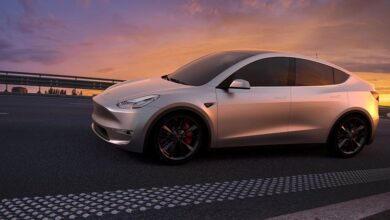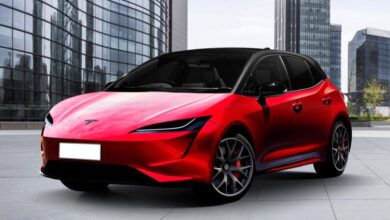3 Ways to Make Sense of Elon Musk’s Supercharger Massacre
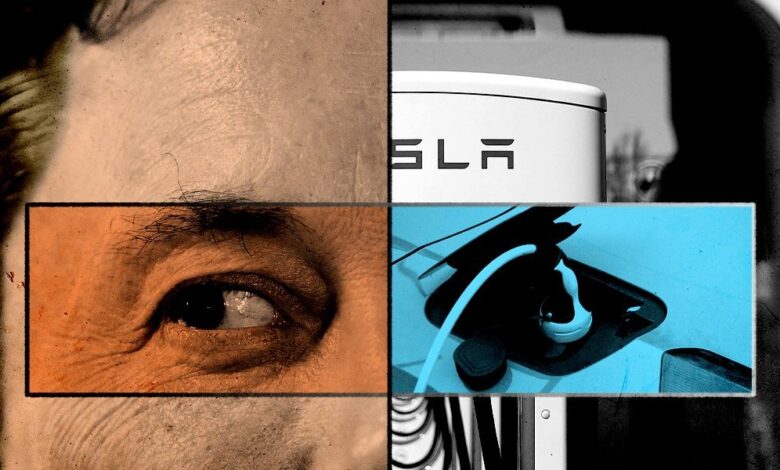
“Delete, delete, delete,” Elon Musk reportedly told his biographer, Walter Isaacson, describing his approach to management. “Delete any part or process you can. You may have to add them back later. In fact, if you do not end up adding back at least 10% of them, then you didn’t delete enough.”
Musk has taken his own advice: He is slicing to the bone. Earlier this week, he dismissed the head of Tesla’s Supercharger network, Rebecca Tinucci, as well as her more than 500-person team. As of today, Tesla has only a barebones crew, at best, tasked with maintaining and expanding its high-speed car charging network. It has already pulled out of a planned expansion in New York City.
Musk also laid off what remained of the company’s policy and new vehicle teams. These severe cuts follow layoffs announced in March, when Musk dismissed about 10% of Tesla’s employees. According to Electrek, the two events may be related: Musk asked Tinucci to make deeper cuts in her team in April, she pushed back, and he fired her to set an example. The company has cut more than 14,000 employees worldwide since the beginning of the year.
The news is — and there is no way of sugarcoating this — either sort of stupid, bad, or very bad for the electric vehicle transition. Here are three ways of looking at it:
1. It’s worrisome for other automakers
Over the past year, every other major automaker in the United States has switched to Tesla’s charging plug, the North American Charging Standard, or NACS. They have struck deals that will let them use much of Tesla’s existing Supercharger network; Ford is in the process of mailing its drivers a free NACs adapter plug. These agreements were meant to give consumers more certainty about the EV transition: No matter what car they bought, they would be able to use most of Tesla’s superior charging network.
Now, that certainty is gone. Which chargers will work in the future? How much more will the Tesla network expand? And what will happen to those deals with automakers now that the Supercharger team is gone? The employees laid off this week included those who worked closely with other companies.
At least publicly, Ford is keeping its cool. “Our plans for our customers do not change,” Marty Günsberg, communications director for Ford’s electric vehicle division, told Heatmap. And yet contractors and others with business in front of Tesla’s charging team were left completely in the dark Tuesday, their emails bouncing back from addresses that no longer existed, according to E&E News. No other equivalent charging network exists in the U.S., meaning there’s no other easy place for them to go.
2. It’s about hype
Musk, for his part, has intimated that the company will begin to look into wireless charging. Although wireless charging may make slightly more sense for self-driving cars — the car could drive itself into a given spot, etvoilà! — it is a puzzling decision from a man who has said the only real constraints are those imposed by the laws of physics. More than half of current and prospective EV owners say that they worry about charger availability and convenience, yet wireless charging is slower and less efficient than wired charging, meaning it will require more charging spots and each vehicle will have to stay there longer.
So again we must ask, why? The answer may lie in the animal spirits of the market — and Elon’s dependence on the market for his personal wealth. Tesla’s stock has more or less held steady since the cuts. As my colleague Matthew Zeitlin wrote, Musk has spun the layoffs as part of a corporate turn away from selling electric vehicles, chargers, and home batteries and toward achieving artificial intelligence and autonomous driving.
That is partly because Musk must keep justifying — or, if we really want to be blunt, propping up — Tesla’s astronomical share price, which itself is premised on the idea that Tesla is a technology company, not a car company. In order to do that, he must continually steer his sometimes-profitable company toward the buzziest, most hyped-up phenomenon in the economy. Never mind his actually existing EV charger business; that can’t justify the fantasy of the share price. He needs to find something new.
3. It’s a bad sign
One of the more useful ways of understanding Elon Musk is that he seeks to create and control private infrastructure. SpaceX creates privatized access to rocket launches. Starlink allows for privatized access to the global, satellite-provided internet. The Hyperloop — to the degree that it existed at all — sought to create a privatized and individualized form of mass transit. (Musk, fittingly, hates public transit.) Even Musk’s purchase of Twitter, now rechristened X, reflected a desire to enclose the public sphere.
And for the past year, you could understand Tesla in the same light. Sure, Tesla was an electric vehicle company. But it was rapidly becoming an infrastructure company. Through its deals with other automakers, it was cementing itself as the premier provider of electric vehicle charging in the United States. It was also the part of the company that elicited the least suspicion from Tesla’s many critics. Drivers might not always be able to rely on a third-party charger, but a Tesla Supercharger? It worked.
It hasn’t always been this way. For years, the Supercharger network seemed like Tesla’s key competitive advantage, its Warren Buffett-style moat. If you wanted access to America’s most famous and reliable fast-charging network, you had to buy a Tesla. But starting with Ford a year ago, Musk struck deals with other automakers allowing their cars to use some of its charger network. At the same time, Tesla also bowed to federal pressure and standardized its NACS charger with SAE International. That helped it win more than $17 million in grants from the Bipartisan Infrastructure Law to build even more chargers.
Why pull back now? None of the options is very encouraging. The most hopeful answer is Tesla-specific: Maybe demand for the automaker’s vehicles is sinking so quickly that Musk is, in essence, reaching for things he can throw overboard. Tesla has historically relied on Chinese consumers to buoy its sales, but it has hemorrhaged market share in China as the country’s home-grown automakers have come out with newer and often superior EVs. But things there took a turn for the better earlier this week as Musk won approval (albeit conditional) to use Tesla’s so-called Full Self-Driving software on Chinese roads. And even if a sales slump were the explanation, why also ditch the team working on new vehicles at Tesla?
The other possibilities are bleaker. BloombergNEF has ballparked that Tesla’s charging business could generate $740 million in annual profits by 2030. But that relies on Musk’s estimate that the Supercharging business has a 10% margin. If that margin has since shrunk — or if its chargers just aren’t getting used as much as Tesla once anticipated — then further investment right now might not make sense.
That’s a problem, though, as most prospective buyers say that there need to be even more public chargers before they would consider buying an EV. If the economics don’t justify a further investment in chargers, however, even with all that apparently pent up demand, then the country is in a pickle. In that case, Musk’s decision looks self-defeating, a panicky and downturn-averse reaction that will ultimately undercut the market for Tesla’s cars.
About the only bright spot here is that Musk has surrendered hundreds of the most talented charging employees to the market. Tesla excelled at using a mix of policy and engineering prowess to integrate their chargers into local utilities’ systems and rate structures; other automakers can now snap up the people with those skills.
